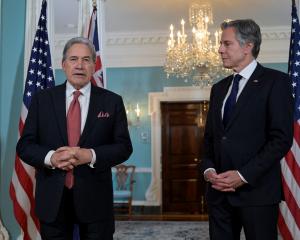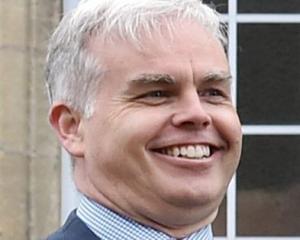
Nothing worked. Not pulling back on the yoke to try to get the nose up. Not attempting to adjust the trim, the preliminary report on the crash would show. Making matters worse, multiple alarms, clackers and other audible warnings distracted the pair. The jet crashed in March outside Addis Ababa, killing 157.
The crash laid bare Boeing's shortcomings in having designed an automated flight system that overrode the actions of the flight crew. But it also raised questions about pilot experience - whether mistakes were made in the cockpit and whether foreign airlines require pilots to have enough training. Those questions will be at the fore today, when a committee of the United Nations-backed body that sets international standards for air travel is to take a fresh look at pilot requirements.
In the United States, 1500 hours. Overseas, 240 hours
In the US, co-pilots must have a minimum of 1500 flight hours, the same as pilots, before they can take the right seat in a commercial airliner. Internationally, it is only 240 hours and can include a mix of time in simulators.
While the preliminary accident report in the Ethiopian crash showed the 29-year-old pilot had an impressive 8122 hours of flight time, the 25-year-old first officer had only 361 total hours, and had his commercial airline licence for three months.
The crash followed another about five months earlier, involving another 737 Max flown by Lion Air. That plane plummeted into the Java Sea, killing 189.
In both crashes, probes revealed an automated system repeatedly pointed the planes' noses down as pilots tried to pull up. Boeing had installed the system to compensate for larger engines positioned farther forward on the wing.
After the Lion Air crash, Boeing insisted the 737 Max was safe because pilots could follow a procedure to switch off the system, called the manoeuvering characteristics augmentation system, or MCAS.
Boeing chief executive Dennis Muilenburg hinted about six weeks after the Ethiopian crash that pilots did not "completely" follow procedures.
The crash report illuminates what he may have meant. In particular, the report shows pilots never cut back the plane's power after take-off, which would have made it harder to manually control the horizontal stabiliser.
Would a more experienced or better-trained crew have made a difference?
Lately, talk of blaming the pilots has largely died down. Chesley Sullenberger, the retired US Airways pilot who became a national hero in 2009 after saving all his passengers by ditching his disabled jetliner in the Hudson River, testified to a House of Representatives panel last month that he doubted he could have saved the Ethiopian jet given MCAS and all the distractions in the cockpit during the emergency.
Still, leaders of the House committee on transportation and infrastructure and its aviation subcommittee have requested the Transportation Department's inspector-general look into pilot training standards for commercial pilots operating outside the US, including for those who fly the Boeing 737 Max.
Today, a committee of the International Civil Aviation Organisation, a unit of the United Nations known commonly as ICAO, is scheduled to review flight-hour requirements for pilots. The meeting was scheduled before the 737 Max crashes and will not be limited to requirements for commercial pilots,Miguel Marin, chief of the operational safety section of ICAO's Air Navigation Bureau said.
But rather than moving closer to the US standard, ICAO appears to be headed toward another approach. It is more concerned with pilots' skills and demonstrated competency rather than just flight hours. A recommendation to reduce flight hours, if one comes, would reflect a long-standing difference of philosophy.
Larry Rooney, president of the Coalition of Airline Pilots Associations, said "experience equals safety" and deadpans: "If you're going to fly in winter weather, you need to see it a couple of times."
The flight-hours has become a major issue for commuter airlines in the US. They have seen a worsening pilot shortage since the minimum flight-hour requirement for copilots was raised in 2013 from 250 hours. The change resulted from an investigation into the 2009 crash of a Colgan Air commuter plane outside Buffalo, New York.
The Regional Airline Association, representing commuter carriers, asserts higher flight-hour standards have raised the typical costs of becoming a copilot to $200,000.
Some pilots say there is a lot more to flight safety than a sheer number of flight hours.
Former airline pilot and aviation expert John Cox supports the 1500-hour rule but believes there should be offsets that reflect higher levels of training.
The US Air Force, he said, prepared young officers to fighters in combat with as little as 300 hours of flight time.
By contrast, private pilots concerned wholly about trying to meet the 1500-hour requirement can rack up hours by flying banner-towing planes in good weather - hardly the same level of stress and high-calibre experience as in the military. - TCA












